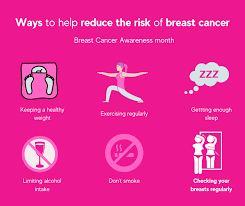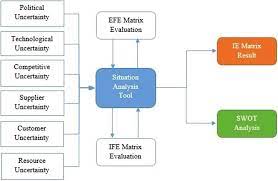Introduction to Evaluating Business Opportunities and Risks
Evaluating business opportunities and risks is a critical process for entrepreneurs, investors, and business leaders seeking to make informed decisions and maximize returns while minimizing potential losses. In this article, we explore the importance of evaluating business opportunities and risks and key strategies for identifying, assessing, and managing them effectively.
Understanding Business Opportunities and Risks
Business opportunities refer to favorable circumstances or situations that have the potential to generate positive outcomes or returns for a business, such as launching a new product, entering a new market, or expanding operations. Business risks, on the other hand, are potential threats or challenges that could impede the achievement of business objectives or result in financial losses, such as market volatility, competitive pressures, or regulatory changes.
Importance of Evaluating Business Opportunities and Risks
Evaluating business opportunities and risks is essential for making informed decisions, allocating resources effectively, and maximizing the likelihood of success. By assessing potential opportunities and risks, businesses can identify potential pitfalls, develop contingency plans, and make strategic adjustments to minimize potential losses and maximize returns.
Key Factors to Consider in Evaluating Business Opportunities
Market Analysis
Conducting a thorough market analysis is crucial for understanding market dynamics, trends, and opportunities, including customer needs, preferences, and behaviors, competitor strategies, and market demand and growth potential.
Competitive Landscape
Assessing the competitive landscape helps businesses identify key competitors, their strengths and weaknesses, market positioning, and potential threats or opportunities posed by competitors’ actions or market trends.
Financial Viability
Evaluating the financial viability of a business opportunity involves analyzing potential revenues, costs, profitability, and return on investment, as well as assessing financial risks and constraints, such as funding requirements, cash flow projections, and financial performance indicators.
Legal and Regulatory Considerations
Assessing legal and regulatory considerations involves identifying and understanding applicable laws, regulations, and compliance requirements that may impact the business opportunity, such as industry regulations, licensing requirements, intellectual property rights, and environmental regulations.
Strategies for Identifying and Assessing Business Risks
Risk Identification
Identifying potential risks involves systematically identifying and categorizing potential threats or uncertainties that could impact the achievement of business objectives, including internal and external risks, known and unknown risks, and strategic, operational, financial, and regulatory risks.
Risk Assessment and Prioritization
Assessing and prioritizing risks involves evaluating the likelihood and impact of each risk scenario, considering factors such as probability, severity, velocity, and persistence, and prioritizing risks based on their significance and potential consequences.
Risk Mitigation and Management
Mitigating and managing risks involves developing risk mitigation strategies and action plans to reduce the likelihood or impact of identified risks, such as risk avoidance, risk reduction, risk transfer, or risk acceptance, and implementing monitoring and control mechanisms to track and manage risks over time.
Benefits of Evaluating Business Opportunities and Risks
Informed Decision Making
Evaluating business opportunities and risks enables businesses to make informed decisions based on a comprehensive understanding of potential opportunities, threats, and trade-offs, rather than relying on intuition or guesswork.
Risk Mitigation and Contingency Planning
Assessing and managing business risks allows businesses to develop contingency plans and alternative courses of action to address potential challenges or disruptions, minimizing the impact on business operations and performance.
Maximizing Return on Investment
By identifying and capitalizing on favorable business opportunities while proactively managing risks, businesses can maximize their return on investment and achieve their strategic objectives more effectively.
Challenges and Considerations
Uncertainty and Complexity
Evaluating business opportunities and risks involves dealing with uncertainty, complexity, and ambiguity, as well as balancing competing interests, priorities, and objectives, which can pose challenges for decision makers.
Limited Resources
Limited resources, such as time, expertise, and financial resources, may constrain businesses’ ability to conduct thorough evaluations, implement risk mitigation measures, or pursue all available opportunities, requiring careful prioritization and resource allocation.
Balancing Risk and Reward
Balancing risk and reward involves weighing the potential benefits of pursuing a business opportunity against the potential risks and uncertainties involved, as well as considering factors such as risk tolerance, appetite for risk, and long-term sustainability.
Implementation Tips for Evaluating Business Opportunities and Risks
Conduct Due Diligence
Conduct thorough due diligence and research to gather relevant information, data, and insights to inform decision making and risk assessment, including market research, financial analysis, and legal and regulatory compliance reviews.
Seek Expert Advice
Seek advice and input from experts, advisors, and industry professionals with relevant experience and expertise in areas such as finance, law, risk management, and strategic planning to supplement internal capabilities and perspectives.
Develop a Risk Management Plan
Develop a comprehensive risk management plan that outlines key risks, mitigation strategies, responsibilities, and monitoring mechanisms, and integrate risk management into business planning, decision making, and performance management processes.
Monitor and Adapt to Changing Conditions
Regularly monitor and review business opportunities and risks, reassessing assumptions, updating risk assessments, and adjusting strategies and plans in response to changing market conditions, emerging risks, or new opportunities.
Conclusion
In conclusion, evaluating business opportunities and risks is essential for making informed decisions, maximizing returns, and minimizing potential losses. By understanding key factors, implementing effective strategies, and addressing challenges and considerations, businesses can identify and capitalize on opportunities while proactively managing risks to achieve their strategic objectives and long-term success.









